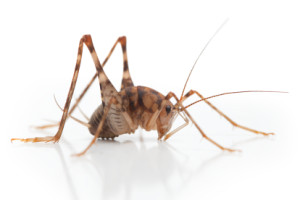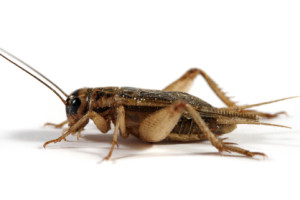
Large, arching hind legs; thin, wispy antennae; humpbacked appearance; wingless
ColorRange of browns; babies are translucent
SizeBodies are about 5 centimeters long; legs can reach up to 10 centimeters long
HabitatMoist environments, such as caves, wells, rotting stumps and damp leaves
Interesting FactsUnlike most crickets, camel crickets do not chirp

Larger, compound eyes; small bodies; overlapping, translucent wings; long antennae
ColorRange of yellowish-browns
SizeAdults are approximately 1 inch long
HabitatUnder rocks; within trees and stumps; among leaves
Interesting FactsThere are approximately 900 species of crickets throughout the world.